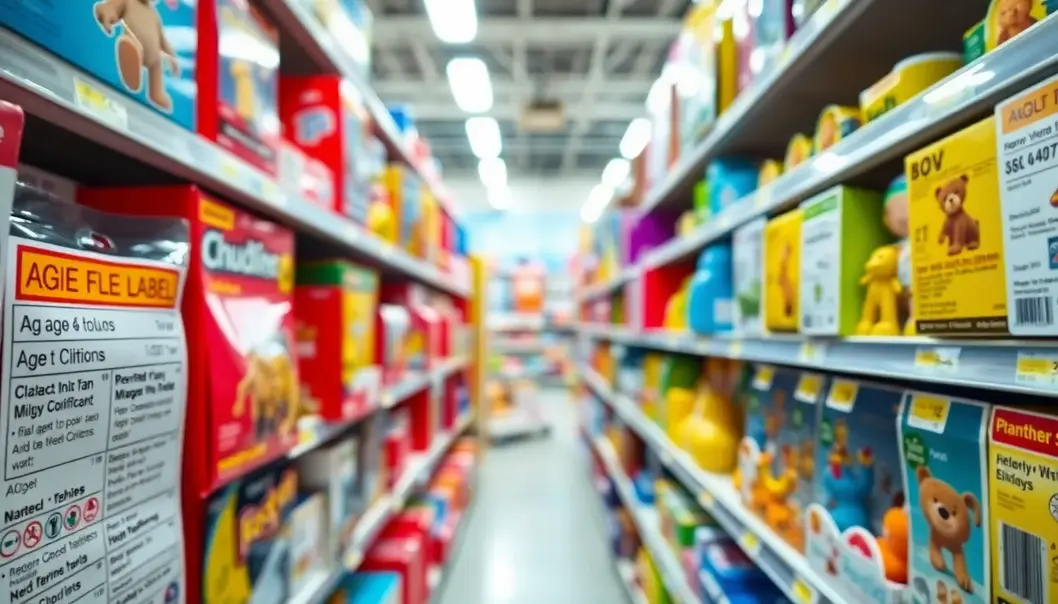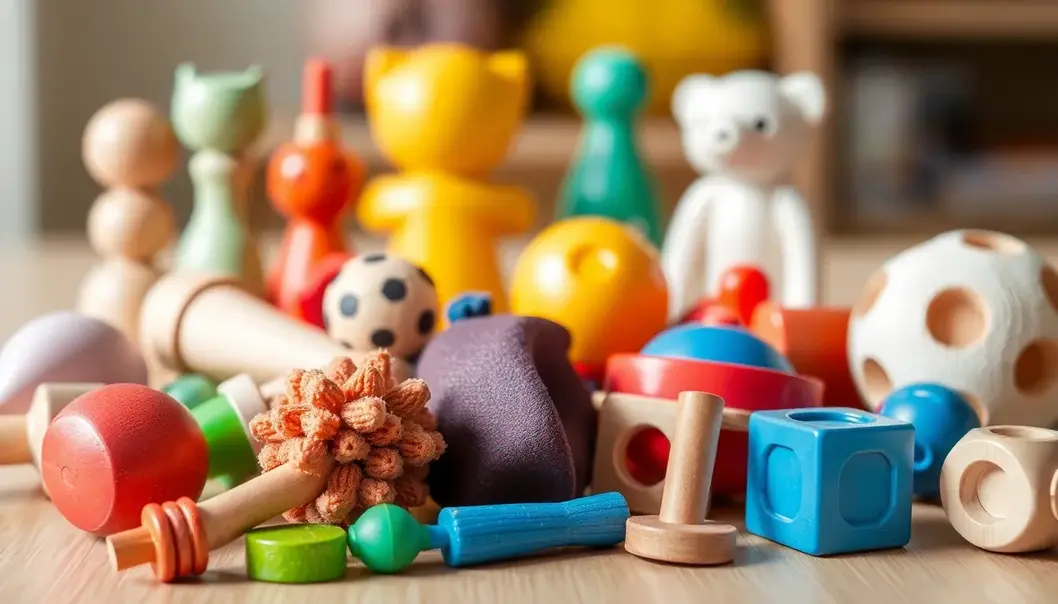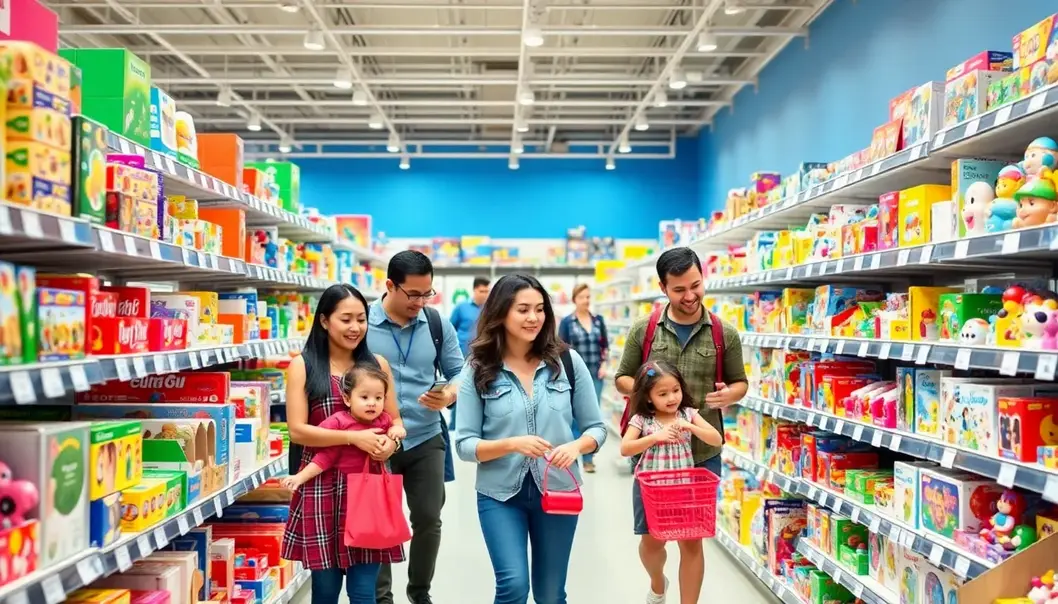Choosing toys for your kids sounds fun, but when you’re faced with a dazzling array of options, it can quickly become overwhelming. As young parents, you want the best for your little ones, ensuring they play safely while also developing their cognitive and motor skills. So how do you balance the true joy of play with the utmost safety? In this guide, you’ll find actionable steps to make informed decisions about the toys you bring home. Let’s dive into a world of safe and healthy play, where fun and enlightenment coexist seamlessly!
Decoding Age Labels and Safety Standards

Stepping into the toy aisle can be an overwhelming experience for many young parents. With countless options and colorful packaging vying for attention, deciphering what is both fun and safe for your child is critical. Understanding toy labels is the first step in making informed decisions.
Age labels on toys should be more than just a guideline; they provide crucial insights into the developmental stage the toy is designed for. An age recommendation may seem straightforward, but it encompasses more than a child’s ability to physically handle a toy. It considers potential choking hazards, sharp edges, or small parts that a younger child may not safely manage. An age-appropriate toy is designed to align with a child’s skills and comprehension at different growth phases.
Safety standards on toy labels are equally essential and are often delineated by certifications from recognized safety bodies. For instance, a CE mark in Europe indicates conformity with health, safety, and environmental protection standards. In other regions, such as North America, toys will often carry an ASTM (American Society for Testing and Materials) indication or similar to show they meet specific safety requirements. Familiarizing yourself with these symbols allows you to quickly identify toys that adhere to rigorous safety protocols.
Beyond symbols and numbers, pay attention to product warnings and instructions. Warnings about small parts can indicate a choking hazard, specifically underlining the importance of adhering to age guidelines. Instructions are also pivotal; they not only ensure the safe use of the toy but can enhance the educational value by demonstrating its intended play or assembly method.
Also, consider the material used in toy manufacturing, which can directly impact safety—a topic that will be delved into further in our next chapter. As you navigate the toy aisle, a broader awareness of these labels and standards will empower you to choose toys that are not only entertaining but also ensure the well-being of your young explorers. This knowledge fortifies your role in fostering a safe and fulfilling play environment for your child.
Materials Matter: Know What They’re Made Of

In the journey of selecting safe and enjoyable toys for your child, the materials used in toys play a crucial role. It’s vital to focus on non-toxic, durable, and environmentally friendly materials to ensure your child’s safety and well-being.
First and foremost, understanding which materials are non-toxic is of utmost importance. Toys often find their way into a child’s mouth, making the presence of harmful substances a major concern. Look for labeling that confirms toys are made from BPA-free plastic or natural materials like uncoated wood. Many wooden toys, when finished with water-based, non-toxic paints, provide a safer alternative to plastics. Avoid toys made with PVC or phthalates, as these can release harmful chemicals over time.
Durability is another key factor. Toys made from high-quality wood or strong, non-brittle plastics often last longer and are less likely to break into small, dangerous parts. For instance, fabric toys reinforced with double stitching can withstand the rough play that often accompanies a child’s imaginative adventures.
Environmentally friendly options are gaining traction, and rightly so. Toys made from recycled or biodegradable materials not only protect the planet but often adhere to higher standards of safety and manufacturing. Opt for toys produced by manufacturers committed to reducing their carbon footprint, ensuring both your child and the environment benefit.
Conversely, it’s wise to be cautious of certain materials, particularly those without clear labeling. Painted toys from unverified sources may contain lead or other toxic substances not visible to the eye, posing potential risks. Uncertified metal toys could also pose a threat due to unwanted heavy metals.
Navigating these choices may feel daunting, but understanding the materials informs safer decisions and reinforces safety alongside fun. As you become familiar with what to seek or avoid, the task of selecting the perfect toy becomes a rewarding experience, contributing to both a joyful childhood and a healthier planet.
Final words
By grasping the key elements of toy safety, you pave the way for uninterrupted joy and learning through play. Equipping yourself with knowledge about age-appropriate selections and safe materials means you can confidently navigate the toy aisles. Safe toys equate to worry-free fun and development for your kids!
Ready to buy safe toys for your child? Browse our top-rated selections now!
Learn more: https://www.safekidstoys.com
About us
Safe Kids Toys offers a curated selection of toys that prioritize safety and fun. Our products adhere to the highest safety standards, ensuring peace of mind for parents while enhancing children’s playtime experience.



